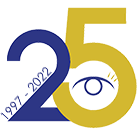Chalazion / Stye Treatment
Chalazion – Stye Treatment
The upper and lower eyelids have small glands (meibomian glands) along their edges which produce oil that helps lubricate the eye. If one of these glands becomes infected, a stye – or small abscess – can form on the edge of the eyelid. If a meibomian gland become blocked, a chalazion can form as a result of material accumulating in the eyelid.
Why Do Chalazia or Stye’s Occur?
In most cases there is no underlying cause. If your child’s eyelids are often irritated with visible redness, inflammation of the oil gland openings called “blepharitis” can occur. Blepharitis can increase the likelihood of developing a chalazion. Eye rubbing and certain skin types may be more prone to developing blepharitis.
Chalazia and Stye Treatment
Although chalazia typically resolve on their own within a few days to weeks, they can sometimes take months to completely disappear. Warm compresses help to loosen the material blocking the gland and can promote drainage. Depending on the amount of inflammation, we may prescribe anti-inflammatory eye drops or ointments.
If a bacterial infection develops in the eyelid, oral antibiotics may be necessary. Surgical drainage can be required for chalazia that become large, swollen, and/or do not resolve using the above treatments.
Learn more about Chalazion / Stye: AAPOS – Chalazion / Stye

